Automated driving during wetness and rain - tests on the digitrans test center
Especially in the field of autonomous driving, it is important that the vehicle recognizes lane markings optimally. SWARCO Road Marking Systems, together with researchers from the Johannes Keppler University Linz, has tested the machine recognizability of lane markings under different conditions at the Digitrans test center in St. Valentin.
Bad weather challenges
Bad weather makes driving significantly more difficult. Drivers have to cope with limited visibility and allow for longer braking distances. Maximum concentration and an adapted driving style are crucial in such situations. Highly visible road markings are an enormous help, especially in poor visibility conditions and on wet roads. They provide better orientation – for both man and machine.
Effects on machine vision
With regard to automated driving and autonomous vehicles, SWARCO Road Marking Systems therefore asked itself the question: How well can automated vehicles recognize road markings in adverse weather conditions? To this end, the world’s largest system provider for road markings conducted appropriate tests together with researchers from the “Sustainable Transport Logistics 4.0” chair at Johannes Kepler University Linz (JKU).
The researchers used the Digitrans Test Center for Automated Driving in St. Valentin (Austria) for the test series. Building on a series of tests in fine weather, the detectability of standard and high-performance marking systems was investigated.
The tested marking systems
The high-performance marking system on the Digitrans test center in St. Valentin consists of a cold plastic textured marking with SWARCO SOLIDPLUS premium reflective glass beads. The standard system consists of a cold spray plastic smooth line marking with standard beads. The detectability of these markings was tested on dry and wet road surfaces as well as in rain of varying intensity.
Rainy conditions were provided by the new outdoor sprinkler system, which can produce lifelike rain at the push of a button. The outdoor sprinkler system on the Digitrans test center in St. Valentin is unique in Europe to date. It enables the sensors responsible for environment detection in automated vehicles to be tested and optimized more efficiently under real precipitation conditions. The JKU test vehicle drove along the artificially sprinkled section of road in several lanes in both directions. A camera-based driver assistance system, which is freely available on the market, performed its service in the vehicle. In addition, data was collected by three LiDAR sensors (LiDAR = Light Detection and Ranging).
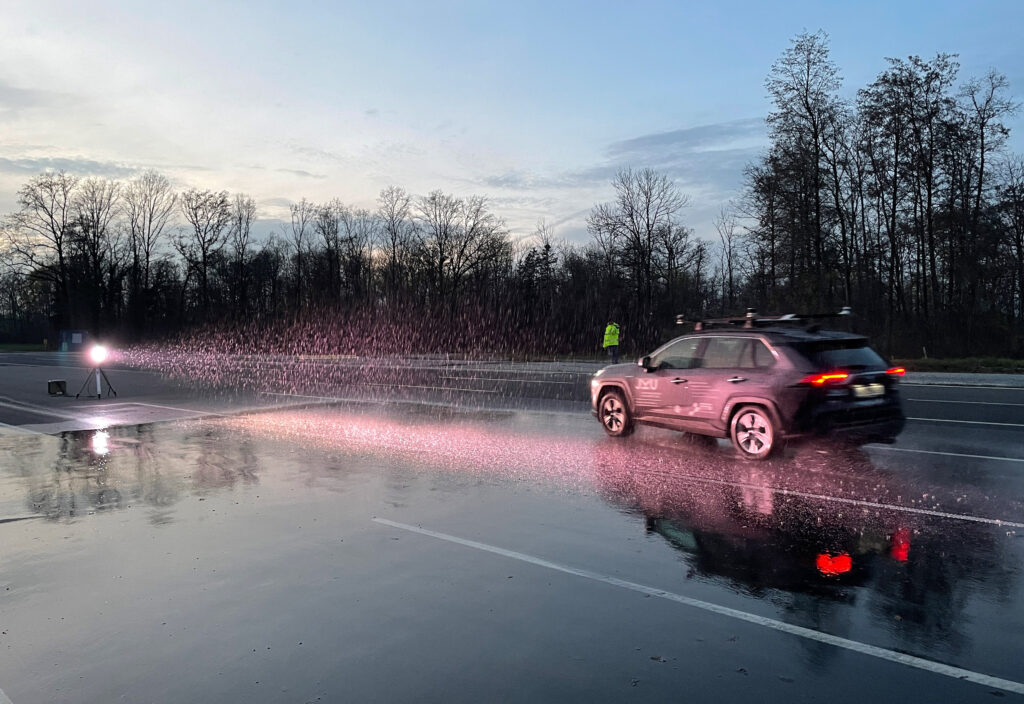
Wet conditions, difficult visibility: In such situations, high-performance road marking systems with SWARCO SOLIDPLUS reflective glass beads show their strength during tests at the Digitrans Test Center for Automated Driving in St. Valentin.
© SWARCO Road Marking Systems
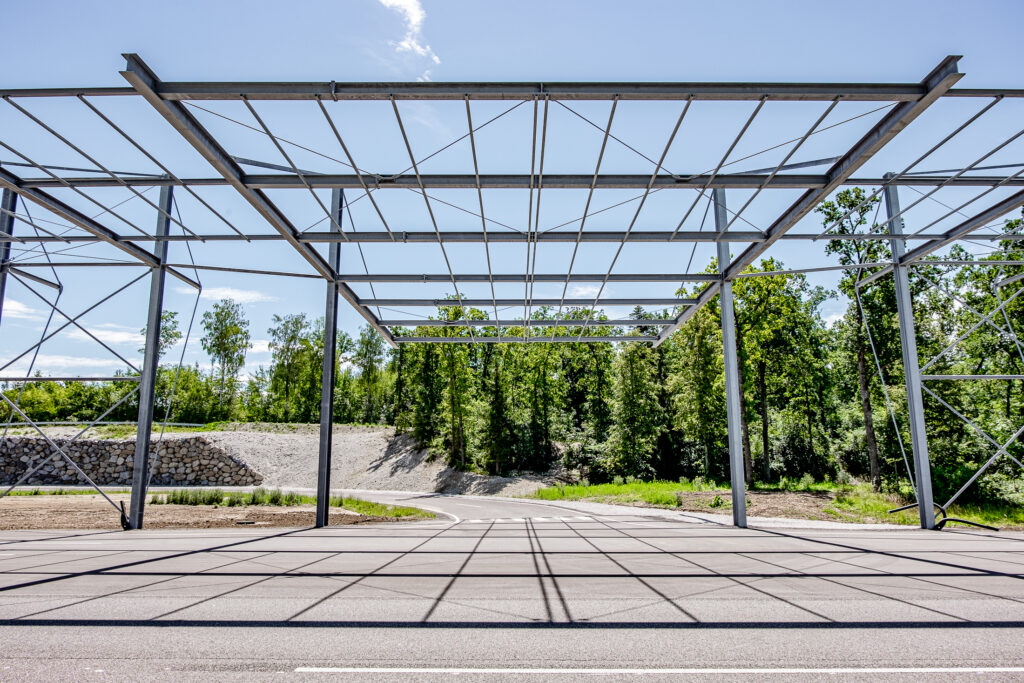
The unique outdoor rain plant at the Digitrans Test Center for Automated Driving in St. Valentin, which can generate lifelike rain simply by pressing a button.
©DigiTrans GmbH
First findings of the tests
From the sensor data obtained, the driving assistance system calculated a detection probability for the markings present. “The first look at the data reveals that on wet roads the high-performance markings can be detected well with SWARCO SOLIDPLUS. Compared to standard markings, these are detected with up to 30 percent higher probability by the camera-based system,” Friedrich Wiesinger, Team Leader in SWARCO Road Marking Systems’ globally networked research department “Center of Competence”, summarizes the initial findings.
But these initial impressions are not to be the end of the story: The research partners are already working on the exact evaluation of the data obtained from the tests on the test center in St. Valentin.
You might also be interested in
Further Insights
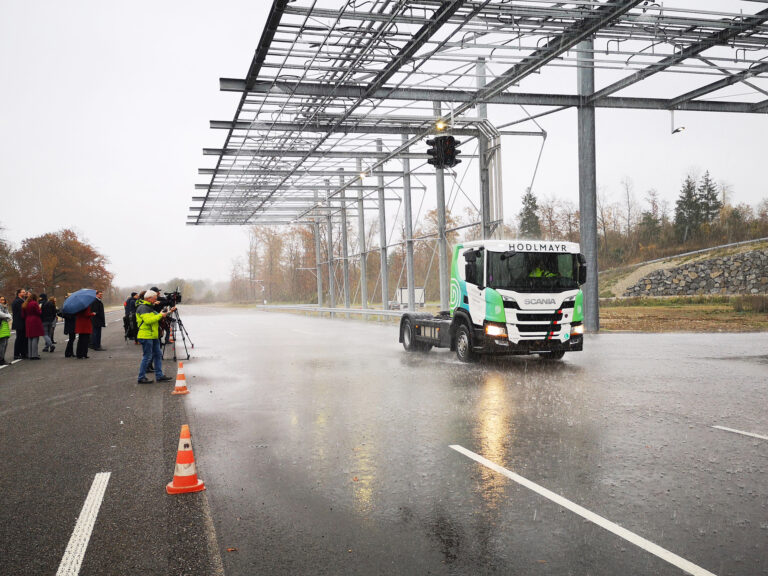
Rain tests for automated driving – Digitrans launches Outdoor Rain Plant
On November 16, 2022, the specially developed outdoor rain plant for rain tests of automated vehicles and their sensors was put into operation. The system makes it possible to generate realistic rain at the push of a button, thus significantly simplifying the testing of sensors for environment detection in rain.
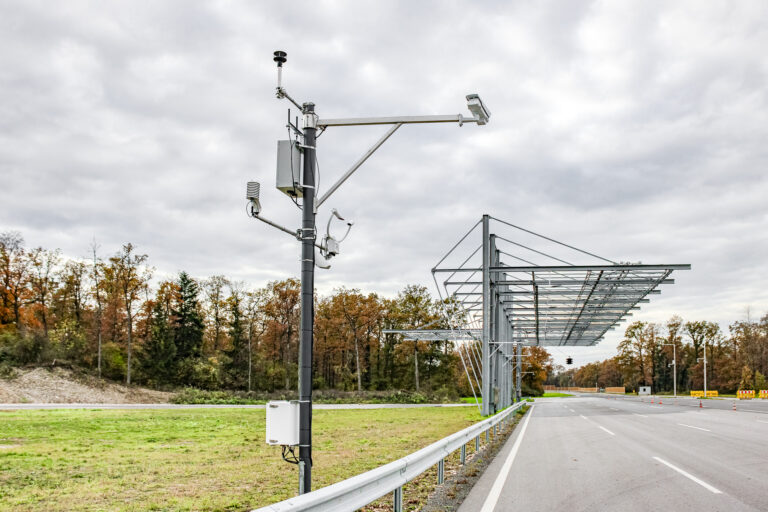
Road weather station provides extensive weather data for the further development of automated driving in rain
A state-of-the-art road weather station supports the experts with a detailed analysis of the environmental conditions and provides a comprehensive real-time data set of the weather conditions on the Proving Ground in St. Valentin.
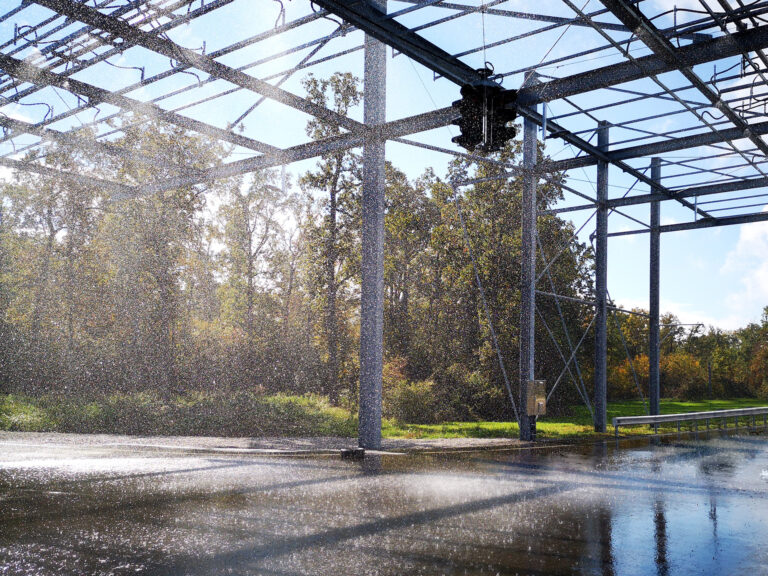
Five reasons why we built an outdoor rain plant for testing autonomous driving functions
Testing autonomous driving functions and their sensors under adverse weather conditions is an important safety criterion for the introduction of automated vehicles in Europe. Learn why it is becoming increasingly important to test these systems systematically and reproducibly.
